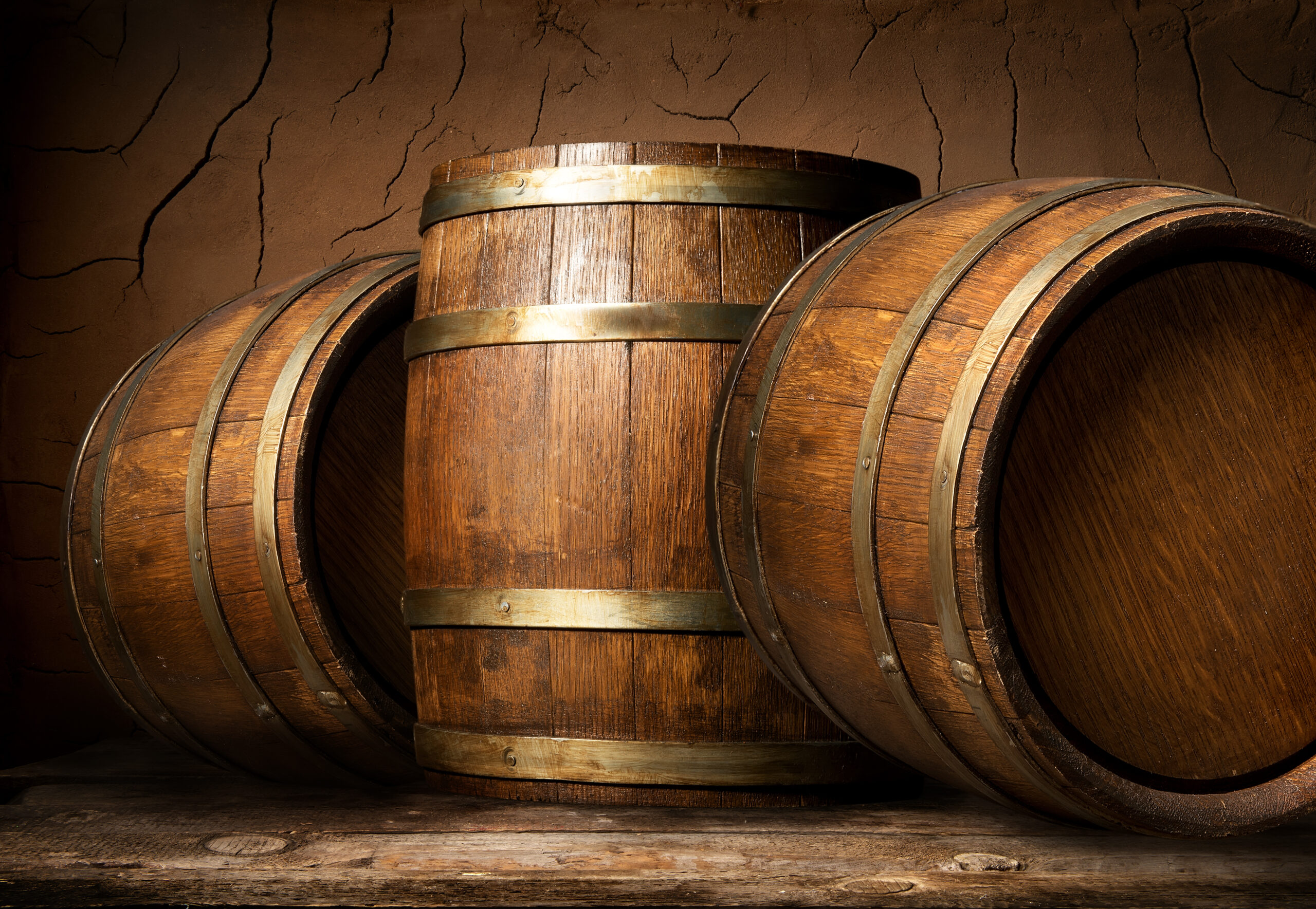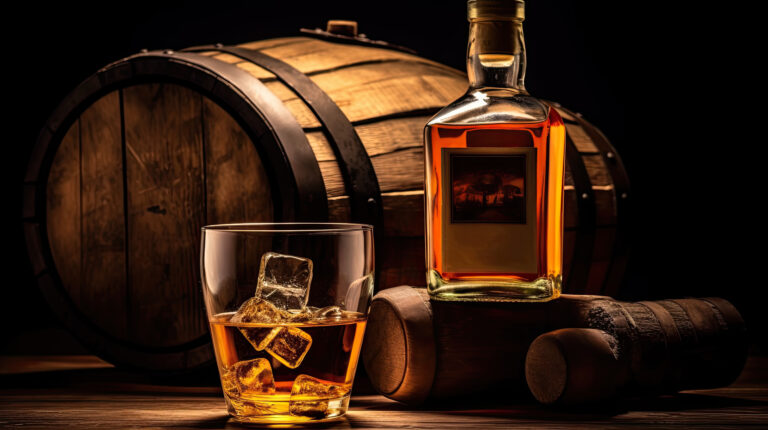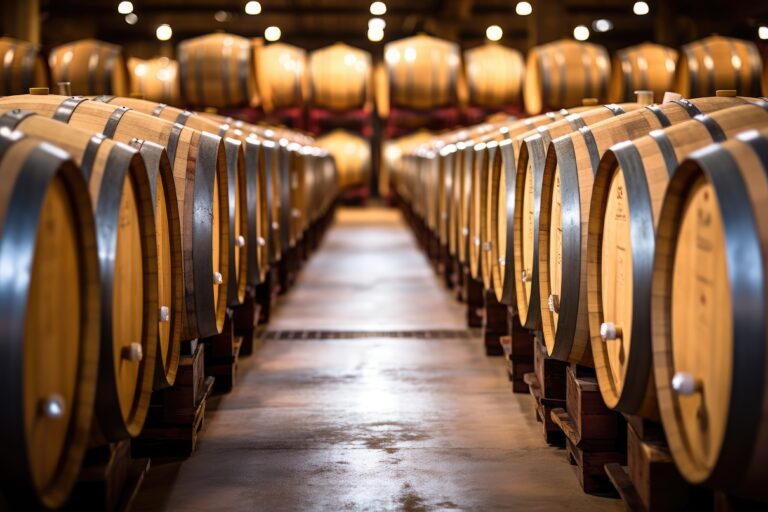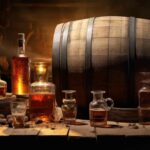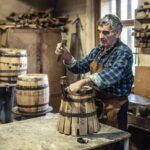Ever wonder why some whiskeys taste like a cozy campfire, while others are all about that sweet, smooth caramel? It’s not magic; it’s all about barrel storage! You might not realize it, but the simple choice of stacking barrels upright or laying them on their sides can totally transform the final flavor of your favorite bourbon, Scotch, or single malt. For smaller craft distillers keen on perfecting their aging techniques, truly understanding barrel orientation is the secret sauce to crafting a uniquely delicious spirit.
Think about it: upright or vertical storage, where barrels stand on their ends, lets more oxygen get in and play with the wood. This means faster maturation and often leads to those spicier, more intense wood-forward flavors. But when you lay a barrel on its side—what we call rickhouse storage—it’s a slower, gentler process. Less surface area is exposed to oxygen, resulting in those mellow, sweeter notes. So, the next time you pour a glass of that beautiful amber ambrosia, take a moment to appreciate how the distiller’s clever choice of barrel orientation helped create that perfect taste. It’s truly the subtle art of barrel storage that transforms raw “white dog” into a smooth, refined spirit.
Upright vs. Sideways: How Barrel Orientation Impacts Maturation
When it comes to barrel aging whiskey, how you position those barrels really matters. Whether they’re standing tall or lying down flat, both upright barrels and sideways barrels influence how the spirit matures and develops its distinct flavor profile. Each method has its own perks, which is why many distillers skillfully use a blend of orientations to achieve the best possible results.
Upright Barrels
Upright barrels, standing on their ends with the bung facing up, are a classic choice. Their compact shape means less surface area is exposed to oxygen, leading to a slower, more deliberate maturation. The narrow opening also helps to concentrate the delicious aromas. The trade-off? Less airflow means less direct interaction with the wood, so the spirit needs more time to really soak up those desired woody notes. They’re ideal for long aging, allowing the whiskey to slowly develop complexity.
Sideways Barrels
Laying barrels on their sides, often called the bourbon barrel orientation, significantly increases the surface area that’s exposed to oxygen thanks to that wider opening. This speeds up maturation and boosts wood contact, giving you those bolder oak and rich caramel flavors in less time. However, this faster oxidation can sometimes mean a loss of those delicate aromas and potentially a shorter shelf life. That’s why distillers keep a watchful eye on sideway barrels to prevent them from becoming over-matured.
By cleverly combining upright barrels and sideways barrels, distillers can hit that perfect balance. Upright barrels are fantastic for long-term aging when you want a slower, more gradual maturation. Sideways barrels shine for shorter aging periods where getting those intense wood and oak flavors quickly is the goal. Blending spirits from different barrel orientations helps create a whiskey with a sophisticated range of aromas and a perfectly balanced, full-bodied flavor that’s sure to impress any aficionado. Understanding how orientation impacts barrel aging is absolutely essential for crafting a truly unforgettable whiskey.
The Science Behind Barrel Orientation and Whiskey Extraction
The way whiskey barrels are positioned during maturation has a profound impact on how the spirit extracts and absorbs flavors and aromas from the wood. This is what we call barrel orientation—whether the barrel is upright, on its side, or even at an angle.
When upright barrels (with the barrel head facing up) are used, you get maximum interaction between the whiskey and the wood. This position exposes the largest surface area of the barrel head, giving the spirit ample opportunity to penetrate deep into the wood. However, this also means evaporation is at its highest. You can expect to lose a noticeable amount—up to 4-6% of the barrel’s contents per year—a phenomenon known as the angel’s share.
Barrels stored on their side, on the other hand, minimize evaporation because less surface area is exposed to the air. But there’s a trade-off: interaction with the wood is also reduced, meaning flavor extraction is more subtle. Many distillers often kick things off with barrels upright for a few years to maximize wood contact, then switch them to their side to slow down evaporation and gently refine the flavors.
Then there are angled barrels, tilted at about a 45° angle, offering a smart compromise. This slight tilt increases the surface area available for moderate interaction with the wood and controlled evaporation. Plus, the angled position submerges more of the barrel head in the whiskey, exposing new areas of wood. Some distillers even rotate barrels from upright to angled to on-the-side over time, creating intricate layers of flavor.
Ultimately, achieving the most complex whiskeys often involves a thoughtful combination of different barrel orientations during maturation. The exact method depends entirely on the distiller’s goals and their unique house style. But no matter the orientation, patience is key. Great whiskey is truly a product of both the barrels and the relentless march of time. With the right care and aging, barrel orientation plays a crucial role in crafting those distinctive, delicious taste profiles we all love.
Tasting the Differences: A Side-by-Side Comparison
The orientation of barrels during maturation is a big deal when it comes to developing the incredible flavor and aroma compounds in whiskey. How a barrel is stored directly impacts how the spirit interacts with the wood, and the extraction of compounds is super dependent on this. Doing a side-by-side tasting of whiskey from barrels stored in different orientations really highlights these fascinating effects.
Barrel Entry Proof
The entry proof, or the alcohol percentage when the spirit first enters the barrel, directly influences how much liquid can penetrate the wood. A higher entry proof means less liquid soaks into the wood. Conversely, a lower entry proof allows more spirit to permeate the barrel staves, extracting a greater array of wood compounds.
Heat Cycling
As temperatures fluctuate during maturation, the spirit inside the barrel expands and contracts, constantly pushing in and out of the wood. This phenomenon is called heat cycling. More exposure to these temperature swings increases the heat cycling effect. When barrels are stored on their sides, there’s more surface area in direct contact with the spirit, which significantly boosts this heat cycling.
Oxidation
Oxidation happens when oxygen interacts with the spirit, mellowing out any harsh flavors and helping new aromas develop. Barrels stored on their sides experience more oxidation because a larger surface area is exposed to oxygen. Upright barrels, on the other hand, see less oxidation due to their smaller exposed surface area and less headspace within the barrel.
Sediment Interaction
Sediment naturally forms during maturation as various compounds precipitate out of the spirit. In upright barrels, this sediment tends to settle at the bottom, interacting minimally with the spirit itself. However, when a barrel is on its side, there’s much more sediment contact, allowing more flavor compounds to be incorporated back into the whiskey.
A side-by-side tasting of whiskey from barrels in different orientations truly emphasizes these impacts. Whiskey from barrels stored on their sides often boasts enhanced wood, caramel, and spice flavors thanks to greater wood interaction and oxidation. In contrast, whiskey from upright barrels might taste sharper and fresher, often with more vibrant fruity notes. The orientation of barrels during maturation genuinely sculpts the flavor development of whiskey. Understanding these effects gives us deeper insight into how distillers expertly craft unique flavor profiles by intelligently leveraging various barrel storage techniques.
The Experts Weigh In: Distillers Share Barrel Orientation Insights
Distillers around the globe have experimented endlessly with various barrel storage orientations to discover what truly yields the best results. Here’s a peek at some of their fascinating insights:
- Barrel orientation matters for flavor extraction. Barbara Heins, Master Distiller at Catskill Distilling Company, emphasizes, “Barrel orientation absolutely has an impact on the flavor development of the spirit inside. The surface area of the barrel staves exposed to spirit is greater when barrels are oriented on their sides, allowing for more interaction between the spirit and wood.”
- Upright barrel storage might speed up maturation. Rob Arnold, President and Head Distiller of Fireweed Distillery, notes, “We have found that storing barrels upright, with the bung facing up, seems to speed up the maturation process. More surface area of the barrel is exposed to air, allowing for slightly faster oxidation and evaporation.” However, he points out the trade-off is less direct wood contact.
- Barrel rotation during aging can lead to more complexity. Ted Breaux, Master Distiller of Lucid Absinthe Supérieure, shares his strategy: “We rotate our barrels during aging to ensure even maturation. As the barrels are rotated, the spirit inside is exposed to new areas of wood. This can lead to greater depth and complexity of flavor.”
- A combination of orientations might be ideal. Colin Spoelman, co-founder of Kings County Distillery, suggests, “We age our whiskey in barrels oriented both vertically and horizontally. We feel that using a combination of the two orientations during maturation leads to the most balanced, complex flavor profile in the finished spirit.”
- There’s no single “best” orientation. Master Distiller Drew Kulsveen of Willett Distillery asserts, “There is no evidence to suggest one barrel orientation is inherently better than others. Many factors like climate, barrel type, and distillate play a significant role in maturation. Barrel orientation is a minor variable compared to these other factors.”
Ultimately, the choice of barrel orientation comes down to a distiller’s unique philosophy and their willingness to experiment to determine what truly works best for their specific spirits and aging conditions. While insights from experts provide valuable guidance, many nuances remain in the intricate art of crafting aged spirits. The sheer variety of perspectives clearly shows that there are many paths to creating a truly great finished product.
Finding the Sweet Spot: Optimizing Barrel Orientation for Your Distillery
The way barrels are oriented during maturation plays a crucial role in developing the incredible aroma, taste, and mouthfeel of aged whiskeys. As master distillers continuously experiment with different barrel orientations, they’re discovering that the “sweet spot” for optimizing flavor truly depends on a handful of key factors.
Charred vs. Uncharred Barrels
For barrels with heavy char, like those essential for bourbons, upright orientation allows the whiskey to fully interact with that intensely charred surface area. This results in those unmistakable, strong notes of vanilla, caramel, and smoke. But for uncharred barrels, often used in Scotch whisky, sideways orientation increases interaction with the wood, imparting delightful flavors of dried fruit, nuts, and spice.
Climate Control
In colder climates, upright barrels offer better insulation and temperature control. The whiskey at the bottom of the barrel stays cooler, which slows down maturation, while the whiskey at the top warms up, speeding things along. This difference helps create wonderful layers of flavor. In warmer climates, sideways barrels are often preferred as they help prevent overheating and those dreaded “hot spots” that can lead to off-flavors.
Blending Batches
For single malts and smaller craft distilleries focused on showcasing a particular flavor profile, consistency is paramount. Upright barrels generally produce the most uniform results within a batch. However, larger distilleries creating blended products might prefer a mix of barrel orientations to build more complex layers of flavors for their blends.
Maximizing Wood Contact
Upright barrels maximize contact with the barrel head, which can impart distinct flavors like coconut, dill, and cedar. Sideways barrels, on the other hand, increase contact with the barrel staves, resulting in richer oak, spice, and clove notes. For some distillers, a smart combination of both orientations helps create a perfect balance of flavors from the various elements of the wood.
Ultimately, the ideal barrel orientation boils down to the specific goals and unique style of each distillery. Through dedicated experimentation with different positions and combinations, master distillers can truly unlock the “sweet spot” for optimizing the flavor, aroma, and character of their aged whiskeys. Finding the right approach for your distillery is undeniably one of the most exciting parts of the creative process!
Final Thoughts
So, there you have it – a straightforward look at how barrel orientation profoundly impacts the incredible flavors and aromas that develop in whiskey as it ages. While vertical barrel storage might be more space-efficient, horizontal storage generally offers more surface area for the whiskey to interact with the wood, often leading to a more complex and nuanced spirit.
Of course, as with many aspects of distillation, there are countless factors at play, and barrel orientation is just one piece of the puzzle. But the next time you savor an aged whiskey, take a moment to consider how those barrels were stacked and the crucial role that seemingly simple decision played in crafting the delightful amber elixir you’re enjoying. It’s truly those meticulous details that make all the difference when it comes to crafting a quality whiskey. And now, you’re in on one of the key secrets to maturing a truly memorable dram!
